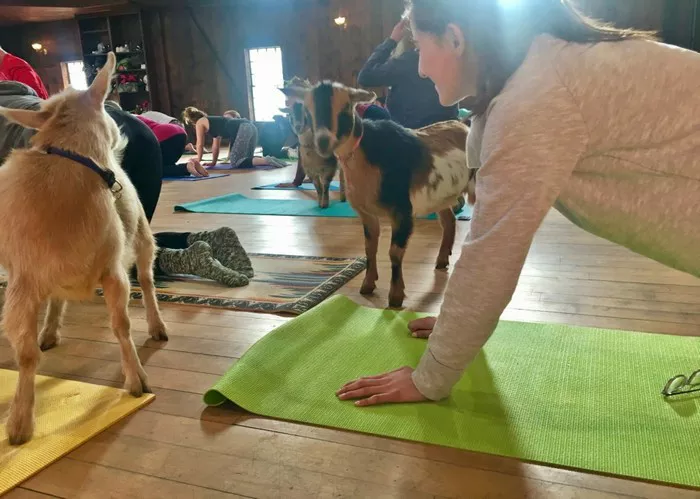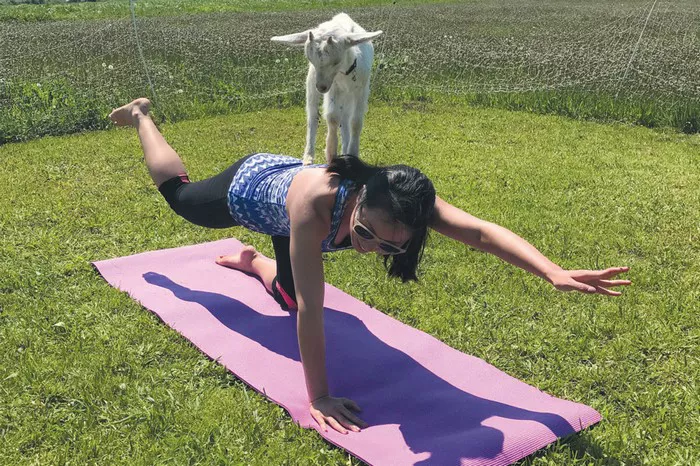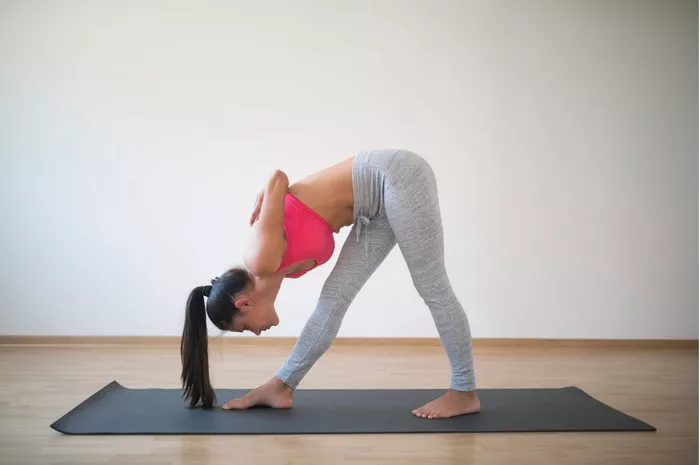Yoga is a deeply rewarding practice that encourages both physical and mental well-being. Whether you’re a seasoned practitioner or a beginner, the mat you choose can make a significant impact on your overall yoga experience. One of the key features that every yogi looks for in a yoga mat is grip. A good yoga mat ensures that you remain stable during poses and prevents slipping, allowing you to concentrate on your breath and movements rather than worrying about balance. But over time, you might start noticing that your yoga mat’s grip isn’t as firm as it once was. This raises an important question: Do yoga mats lose grip over time?
In this article, we’ll explore the various reasons behind the loss of grip in yoga mats, factors that contribute to this phenomenon, how to care for your mat, and tips on choosing a mat that will last longer and maintain its grip. So, let’s dive into understanding this essential part of your yoga practice!
The Basics of Grip on Yoga Mats
Before we address the issue of mats losing grip, let’s take a moment to understand what contributes to the grip of a yoga mat in the first place. The grip of a mat is primarily determined by the material used, the texture of the surface, and the amount of friction it provides against your skin and the floor. Different materials have different properties that impact grip, and understanding these materials will help us determine why some mats lose their grip over time.
Common Materials Used in Yoga Mats
PVC (Polyvinyl Chloride) Mats: These mats are commonly found in the market due to their affordability and durability. PVC mats often provide good grip and cushioning. However, over time, they can degrade due to wear and tear, leading to a decrease in grip.
TPE (Thermoplastic Elastomer) Mats: TPE is a more eco-friendly option compared to PVC. While it offers excellent cushioning and grip, its overall durability may not match that of PVC mats. As these mats age, they can lose their grip, especially if exposed to excess moisture or high friction.
Rubber Mats: Natural rubber is a popular choice due to its high traction and eco-friendly nature. Rubber mats tend to provide superior grip initially, but over time, exposure to sunlight, moisture, and frequent use can cause the rubber to lose its tackiness.
Cork Mats: Cork is another eco-friendly material that offers great grip, especially when it’s dry. However, cork mats may become slippery when exposed to moisture or excessive use.
Jute Mats: Jute mats are made from a natural fiber and offer a unique texture. While they are eco-friendly and provide a moderate level of grip, they can lose their effectiveness if not properly cared for, especially in humid conditions.
Microfiber and Cotton Mats: These mats provide a soft and comfortable feel, and many feature microfiber surfaces designed to enhance grip during practice. However, cotton and microfiber mats tend to lose their grip faster than rubber or PVC mats, especially if they get wet or are frequently washed.
The Role of Texture in Grip
The texture of a yoga mat plays an important role in its ability to grip the floor and provide traction for your hands and feet. A mat with a textured surface (e.g., embossed patterns, ridges, or raised dots) creates more surface area, which increases the friction between your body and the mat. This helps prevent slipping during poses.
In addition to texture, the stickiness of a mat’s surface is also important. A “sticky” yoga mat allows for better grip by adhering to the floor and keeping you stable. However, as the mat ages, its stickiness can decrease, which is when you might notice a reduction in grip.
Reasons Why Yoga Mats Lose Grip Over Time
Now that we understand the basics of yoga mat materials and texture, let’s dive into the reasons why a yoga mat may lose its grip as time goes on. Several factors contribute to this phenomenon, and some of them can be prevented or mitigated with proper care and maintenance.
1. Wear and Tear from Regular Use
Like any product subjected to frequent use, yoga mats inevitably experience wear and tear. The constant friction of your hands, feet, and body against the mat can cause the material to degrade over time. As the mat gets worn down, the surface may lose its grip, resulting in slippage during poses.
The loss of grip is more noticeable with mats that have softer, less durable materials. For example, a mat with a thick PVC or rubber surface may break down after repeated use, leading to a less sticky surface. It’s especially common for mats used for hot yoga, where sweat can break down the mat’s grip more quickly.
2. Exposure to Moisture and Sweat
Yoga, particularly styles like Vinyasa and hot yoga, can lead to significant sweating. While sweat is natural and healthy, it can be one of the main culprits in breaking down the grip of your yoga mat. Sweat contains salts, oils, and moisture, which can seep into the mat and wear down the surface, making it slippery.
Over time, moisture can also cause the mat material to soften, which reduces its ability to hold your body in place. Mats made of synthetic materials like PVC may be particularly vulnerable to this. Additionally, moisture can lead to the growth of bacteria and mold if not properly cleaned and dried.
3. Improper Cleaning and Maintenance
How you clean and maintain your yoga mat plays a critical role in its longevity and grip. Many practitioners neglect proper cleaning or use harsh chemicals that can degrade the material of the mat. For instance, using abrasive cleaning pads or chemical cleaners can strip the mat of its texture and grip.
To ensure the longevity of your mat, always use a gentle cleaner or a DIY solution like water and vinegar to clean it. Avoid soaking the mat or leaving it in damp conditions for long periods, as this can cause the material to soften and lose its tackiness.
4. Exposure to Sunlight and Heat
Excessive exposure to sunlight and heat can cause yoga mats to degrade, regardless of the material they’re made from. UV rays can break down the polymers and fibers in the mat, leading to fading and a decrease in grip. The heat can also cause the mat to become brittle or soft, which affects its performance.
For instance, rubber mats tend to degrade faster when exposed to sunlight. So, it’s important to store your yoga mat in a cool, dry place when not in use, and to avoid leaving it in direct sunlight for extended periods.
5. Storing the Mat Incorrectly
How you store your yoga mat is another factor that can contribute to its loss of grip over time. Rolling up a mat too tightly or storing it in a cramped space can lead to uneven wear and may cause it to lose its shape. Storing a mat in an environment with high humidity or moisture can lead to mold growth and material degradation.
To preserve the grip and overall integrity of the mat, it’s best to store it loosely rolled or flat in a dry area. Some mats even come with a carry bag or strap, which helps in keeping them in good condition when not in use.
6. Quality of the Mat
Not all yoga mats are created equal. The quality of the materials used in the production of a mat will directly impact how long it maintains its grip. High-quality mats, especially those made from natural rubber or top-tier TPE, tend to last longer and maintain their grip better over time than lower-quality PVC or foam mats.
Cheap mats often use low-grade materials that wear out quickly, causing a rapid loss of grip. Investing in a high-quality mat can save you money in the long run as it will last longer and provide better traction.
7. Chemical Build-Up
Over time, the oils from your skin, lotions, and other personal care products can accumulate on the surface of the mat. This buildup can reduce friction, making the mat slippery. Some mats, especially those made from synthetic materials, may absorb these oils, which may require more frequent cleaning to maintain grip.
Regularly wiping down your mat after each practice can help remove excess oils and prevent the buildup that causes slipping.
8. Inadequate Drying Time
After a sweaty practice or cleaning, it’s essential to allow your mat to dry properly. If a mat is not allowed to dry fully, moisture can accumulate and cause the material to lose its firmness and grip. Additionally, a damp mat can become a breeding ground for bacteria, leading to odors and further degradation of the material.
Always ensure that your mat is completely dry before rolling it up or storing it, and avoid practicing on a damp mat.
How to Care for Your Yoga Mat
Proper care can extend the life of your yoga mat and maintain its grip for as long as possible. Here are some simple tips to keep your mat in top condition:
Clean Regularly: After each practice, wipe down your mat with a clean, damp cloth. Use a mild cleaner or a DIY solution (water and vinegar) to disinfect it once a week.
Avoid Harsh Chemicals: Avoid using harsh chemicals like bleach or strong detergents, as these can damage the surface of your mat and lead to a loss of grip.
Dry Properly: Always air dry your mat after use. Avoid direct sunlight, but ensure it’s dry before storing.
Store Correctly: Roll your mat loosely and store it in a cool, dry place. If possible, avoid storing it in a high-humidity environment or in direct sunlight.
Consider Using a Towel: For hot yoga or sweaty sessions, you may want to use a yoga towel over your mat. This can help absorb sweat and reduce wear on the mat’s surface.
Rotate Mats: If you practice frequently, it may be worth investing in more than one mat. Rotating between mats can reduce wear on any one mat and extend its life.
Use Mat Washes and Sprays: Some mats benefit from special yoga mat washes designed to clean and maintain grip. These products are formulated to clean while preserving the texture and surface properties of the mat.
When to Replace Your Yoga Mat
Even with the best care, your yoga mat will eventually need to be replaced. If your mat is no longer providing the grip you need, has become overly soft or brittle, or has noticeable tears or signs of significant wear, it may be time for a new one. While it’s normal for a mat’s grip to wear down a little over time, a significant decrease in traction indicates that it’s no longer safe or effective for your practice.
Conclusion
Yoga mats do lose grip over time, but the extent to which this happens depends on several factors including the material, frequency of use, exposure to moisture and sunlight, and the quality of care the mat receives. By understanding the reasons behind the loss of grip and following the proper maintenance techniques, you can prolong the life of your mat and continue to enjoy a stable and effective yoga practice.
Remember, a good mat is an investment in your yoga practice. A quality mat that provides solid grip is not only essential for your safety but also for ensuring that you can practice with confidence and comfort. Whether you’re a casual yogi or a dedicated practitioner, taking the time to care for your mat will help preserve its functionality and provide you with a better experience every time you roll it out.
Related Topics:


























